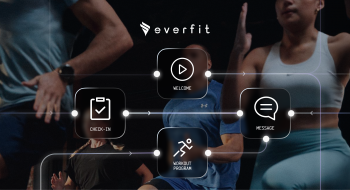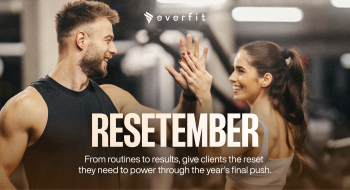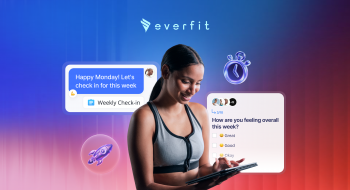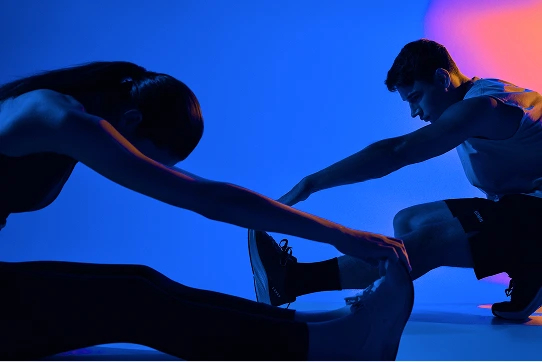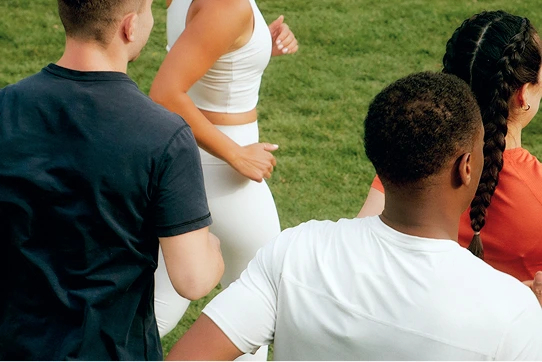Discover how to ensure your clients adopt the proper form when exercising, even if you train them online.
Bad form is a problem. Clients who exercise improperly are at risk of lackluster workout results, muscle imbalances, and injuring themselves. Worse still, they may blame you for their discomfort or lack of progress.
Correcting bad form is pretty straightforward in person. You reduce the resistance level and guide the client through the proper motion until they develop new muscle memory. However, putting poor technique right remotely can feel more challenging. You’re not there with them to offer help.
Fortunately, numerous approaches have been developed that can help you monitor your clients’ form and improve it remotely. Nowadays, you don’t need to stand next to them to fix a problem; you can do it online.
So what are the most effective ways to monitor your clients’ techniques when training remotely? Let’s take a look.
1. Be Honest
First of all, if your clients have bad form, don’t sugar-coat it. Be honest about their current progress level, and what they can do to improve it. It might feel awkward when you do it, but it can save a lot of discomfort, hassle, and injuries in the future.
It matters how you approach telling clients their form or technique requires improvement.
- Introduce the concept gently, telling them what they need to do differently.
- Avoid blaming.
- Get them to repeat movements on video or send you their progress.
- Don’t let them attempt heavier movements or more intense exercises until they master the appropriate technique.
2. Attach Notes, Video, And Text To Exercises
Our second pro tip is to use software that lets you attach notes, videos, and text to exercises you instruct your clients to perform remotely. This helps them discover what they should do and the precise nature of the movement you want them to complete.
For instance, videos should show the proper form, body position, and range of motion. You can add graphics or animations to videos to demonstrate this.
Text can also be helpful. It explains how a particular exercise should feel or clarifies aspects clients might not be able to see in a video or via a live stream.
Notes are useful, too. These are great for warning clients and saying things like, “If you feel a twinge, you’ve gone too far!”
Attaching video, text, and notes to exercises manually is cumbersome, but Everfit makes it easy for you whenever you create a new exercise. Go to Library >> Add New Exercise and select options to include additional information. You can then share the details across popular video platforms, such as YouTube and Vimeo. You can also import these videos and add your personal annotations, telling your clients what’s good and what isn’t.
3. Get Clients To Record Themselves From Different Angles
Thirdly, if live camera feeds aren’t working for you, another option is to get your clients to record themselves from different angles and send you the videos after the session through the Inbox. This approach gives you time to provide feedback and represents a “value-added” opportunity. Most coaches won’t review clients’ techniques after the fact, but you can, setting you apart from the competition.
Compound resistance exercises are the most critical to get right. Improper form can cause shoulder, leg, back, and hip injuries that last a lifetime.
4. Comment On Completed Workouts
You can also monitor your clients’ forms by commenting on completed workouts they upload. Reviewing their technique at the end of a session helps you provide feedback, letting them know where they are succeeding and where they aren’t.
With our Comments on a Completed Workout feature, trainers and coaches can leave comments after a session, reviewing what happened.
This feature is helpful because you can find it challenging to provide real-time feedback during high-intensity classes. Only afterwards do you have the time to go through what went wrong and recommend form improvements to your clients.
5. Tell Clients When They Are Making Mistakes Visually

Another effective way to monitor your clients’ forms remotely is to use screen annotations to point out what they are doing well and what they need to improve. These quick instructions work well in an exercise context, letting you continue guiding the rest of the class.
For instance, you might use screen annotations to encourage workout participants to keep their chest and knees up during an exercise or avoid flaring their elbows. You can also use them to quickly remind trainees about mistakes they are making during a class. These visual cues and reminders can help them get the hang of movements faster.
Note, though, that some of your clients will not have the fitness to observe proper form throughout a lengthy training session. Therefore, you may need to moderate the difficulty until they gain the required muscle memory, strength, and conditioning.
6. Use Positive Reinforcement
You can also use positive reinforcement to encourage proper form when training clients remotely. Telling trainees they are doing well encourages them to continue putting in the effort to ensure they perform exercises correctly. It’s like a little mental boost.
Again, clients are likely to tire during a training session, and many will abandon proper form to make exercises easier. Your job as a trainer is to point out when they are doing well and then leverage that to maximize their effort.
You can also ask them questions after a training session to gauge their level of satisfaction. Happier exercisers are more likely to perform exercises correctly and come back for more!
Summary: Now You Can Monitor Your Clients’ Form When Training Remotely
Now you’ve read this article, you should have a better understanding of how to monitor your clients’ forms when training remotely. Reviewing videos, annotating instructions, and providing verbal encouragement can all help significantly. Don’t be afraid to be innovative and use Everfit’s tools to make your life easier!
Start elevating your coaching and maximizing your clients’ training results with Everfit today!








